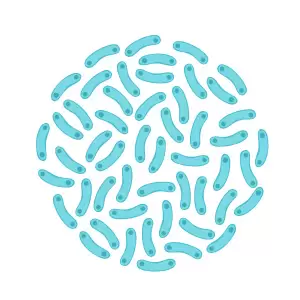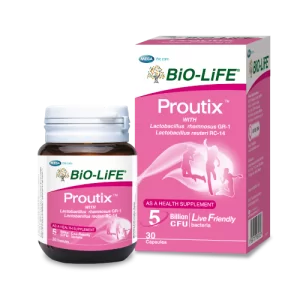
How to Maintain Healthy Vaginal Ecosystem
Mar 10, 2022
Introduction
The vaginal ecosystem is very complex, unique, and dynamic. When the vaginal ecosystem has gone out of balance, and there are more bad bacteria than good bacteria, a woman has a higher chance to face bacterial vaginosis or yeast infection. Statistics have shown that these infections are prevalent. In fact, for every 3 out of 4 women will have at least experience one episode of vaginal infection in their lifetime. 1
Tips to Maintain Healthy Vaginal Ecosystem

1. Practice good personal hygiene
Make sure wipe from front to back after going to bathroom to prevent bacteria from the anus traveling to the vaginal.

2. Choose the right underwear
Your underwear should keep your genital area dry. Cotton underwear is a good choice.

3. Avoid tight-fitting clothes
Stay cool, dry and airy in loose-fitting clothing

4. Avoid douching
Douching upsets the balance of good and bad bacteria in your vagina.

5. Change pads or tampons regularly

6. Use protection
Practice safe sex by using a condom with all your sexual partners, and limit the number of sex partners.

7. Consume vaginal probiotics regularly
- Lactobacillus rhamnosus GR-1 and Lactobacillus reuteri RC-14 are the two probiotic strains that are specifically for women, highly researched and well-documented to maintain women’s urogenital health.
- They can help to restore a healthy vaginal pH <4.5 that is more suitable for good bacteria to grow but not ideal for bad bacteria to survive.
Probiotics for the Vaginal

Proutix contains clinically proven probiotics strain, Lactobacillus rhamnosus GR-1 and Lactobacillus reuteri RC-14 to restore the vaginal microflora and improve women’s urogenital health. 2,3
References
- Denning, D. W., Kneale, M., Sobel, J. D., & Rautemaa-Richardson, R. (2018). Global burden of recurrent vulvovaginal candidiasis: a systematic review. The Lancet infectious diseases, 18(11), e339-e347.
- Borges, S., Silva, J., & Teixeira, P. (2014). The role of lactobacilli and probiotics in maintaining vaginal health. Archives of gynecology and obstetrics, 289(3), 479-489.
- Anukam, K., Osazuwa, E., Ahonkhai, I., Ngwu, M., Osemene, G., Bruce, A. W., & Reid, G. (2006). Augmentation of antimicrobial metronidazole therapy of bacterial vaginosis with oral probiotic Lactobacillus rhamnosus GR-1 and Lactobacillus reuteri RC-14: randomized, double-blind, placebo controlled trial. Microbes and infection, 8(6), 1450–1454.
- Martinez, R. C., Franceschini, S. A., Patta, M. C., Quintana, S. M., Candido, R. C., Ferreira, J. C., De Martinis, E. C., & Reid, G. (2009). Improved treatment of vulvovaginal candidiasis with fluconazole plus probiotic Lactobacillus rhamnosus GR-1 and Lactobacillus reuteri RC-14. Letters in applied microbiology, 48(3), 269–274.



